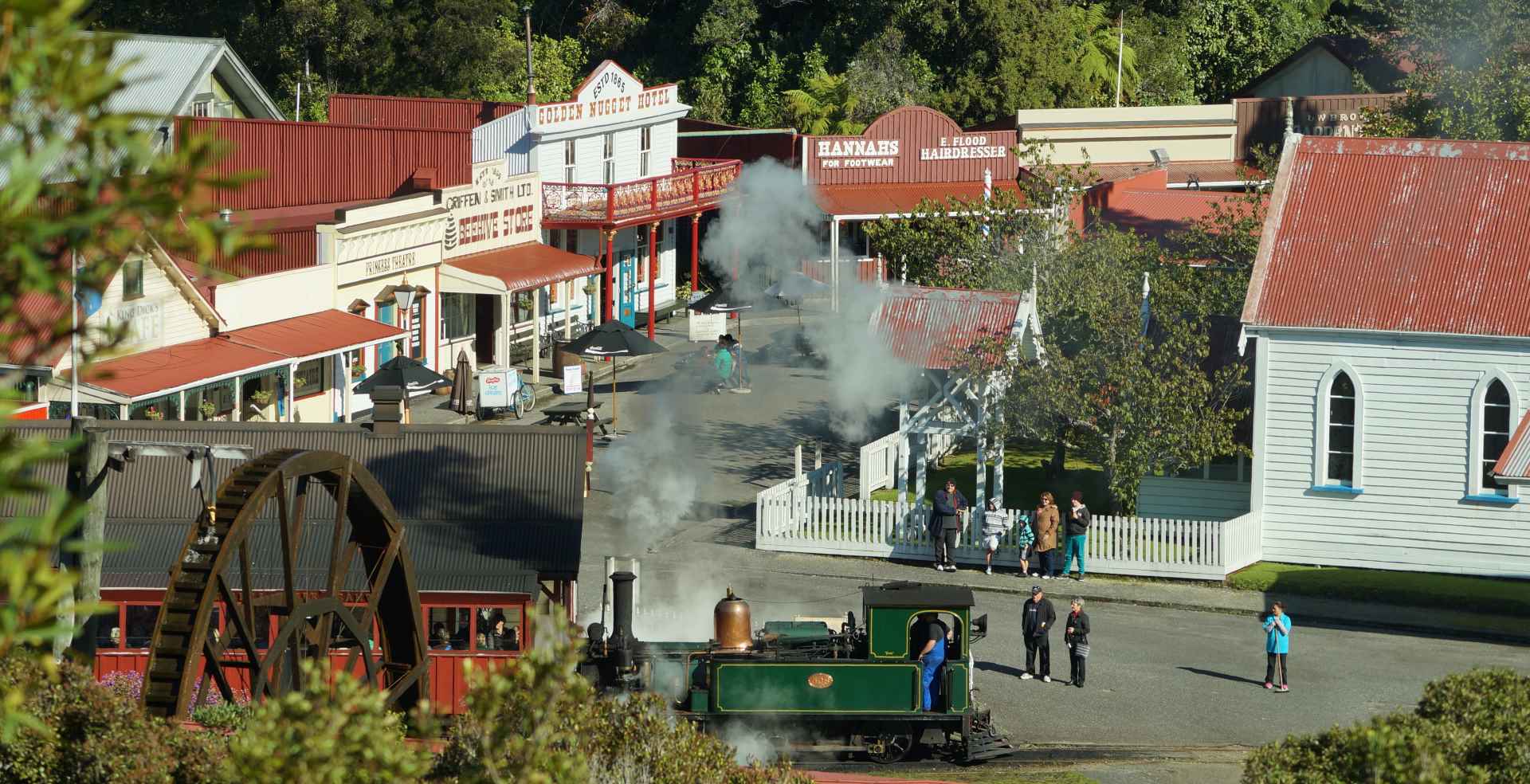
Thirty Shops and Buildings to Explore.
With two village streets filled with shops and buildings to explore, you’ll find fascinating stories of life in the early years of colonisation both on the West Coast and New Zealand.
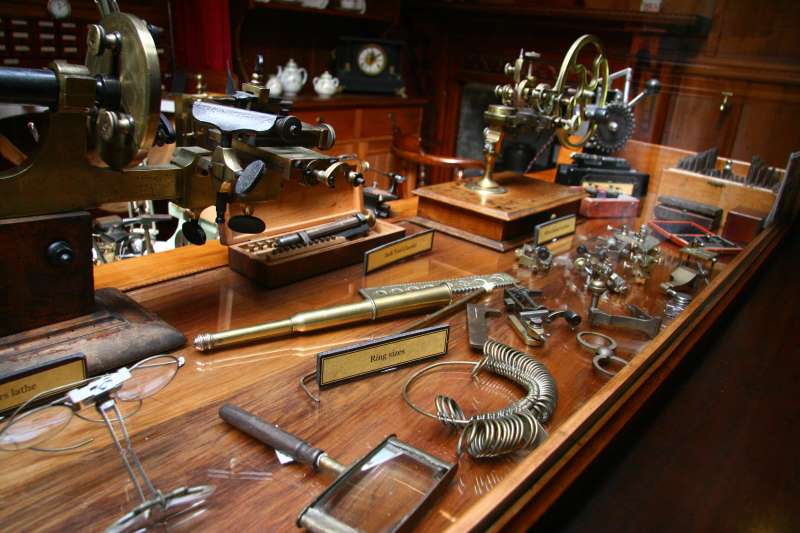
This charming shop pays tribute to Barney Sutherland, one of Shantytown’s esteemed founders and its Mayor. In smaller towns, the skills of a watchmaker and jeweller were often combined to ensure business viability.
What you’ll find:
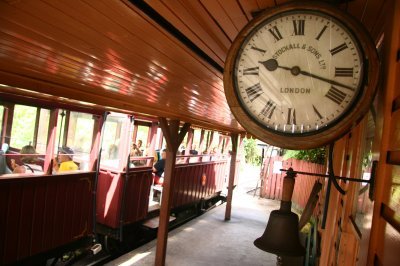
Built to original railway plans, Shantytown’s Railway Station is a close to exact 3/4 replica of a historical railway station. This is where your journey begins for a scenic ride through native rainforest to the Gold Claim and Sluice Area.
More about the railway:

This beautiful inter-denominational church, originally St. Patrick’s Church, dates back to 1866 and hails from the gold mining town of No Town in the Grey Valley. Built of Kauri timber, it was sent from Auckland in a kitset form, barged up the Grey River, and then horse-sleighed five miles (8.4 kilometres) to No Town.
Its journey to Shantytown:
This pretty little church provides an ideal and historic setting for Weddings.
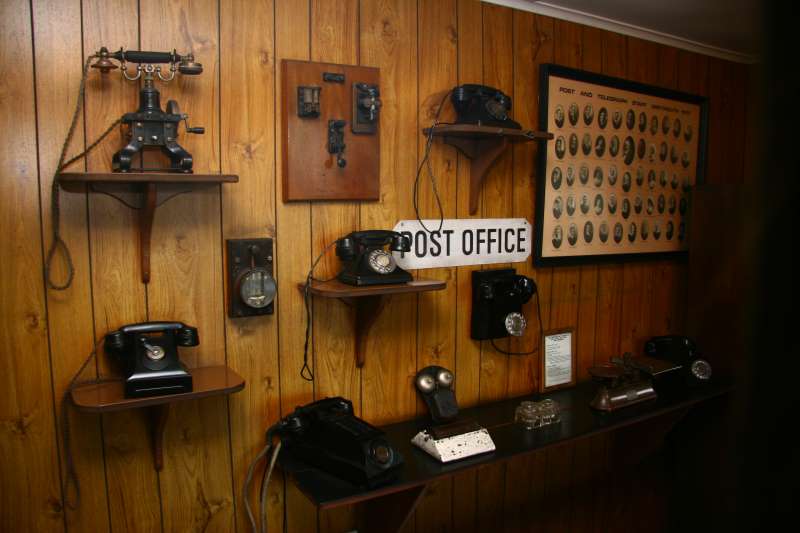
Explore the tribute to the Grey River Postal Agency, which opened on 1 August 1864 and was initially run by Reuben Waite.
The importance of mail in the goldfields:
Don’t forget to send a postcard from Shantytown – it will be stamped with the very sought after Shantytown postmark!

Photographers arrived on the West Coast soon after the discovery of gold, as successful miners were eager to send portraits to family back ‘home’.
Evolution of photography in the goldfields:
You can also create your own historic memory with an Old Time Photo experience at Shantytown.
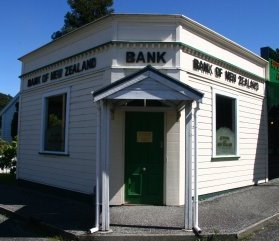
The Bank of New Zealand (BNZ) building at Shantytown showcases the more permanent structures built in settled West Coast towns.
Early banking on the goldfields:
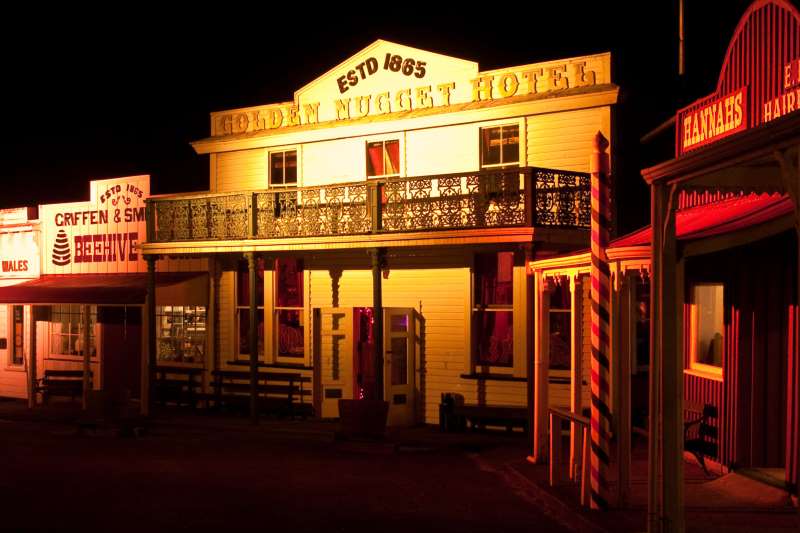
The West Coast was famous for its hotels during the gold rush, with hundreds of hastily built establishments catering to miners’ legendary thirst. These hotels often featured imposing frontages and employed “handsome barmaids” to attract clientele.
Historic elements in our hotel:
The Golden Nugget Hotel is also the location where you can get your fun Old Time Photos taken!
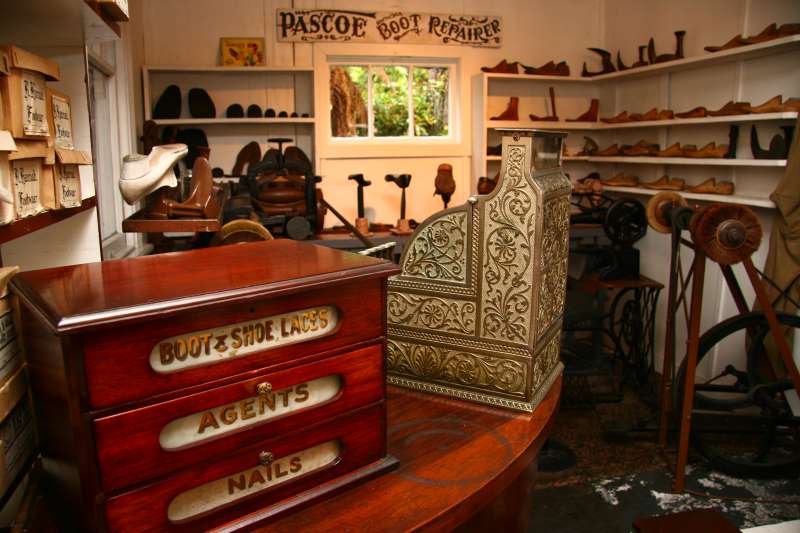
Even small West Coast towns boasted at least one shoe shop, reflecting the constant demand for repairs and new boots in the rugged terrain. Making bespoke boots and shoes was a labor-intensive process.
A notable pioneer:
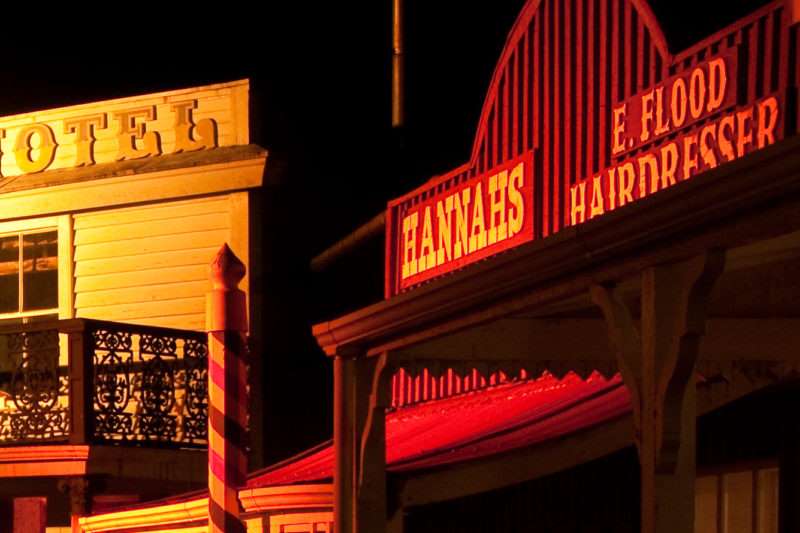
The barber in gold rush towns was far more than just a hairstylist; they were versatile businessmen.
Services offered by a typical barber:
The barber shop was a lively hub of gossip and a secluded male world where clients could spend hours.
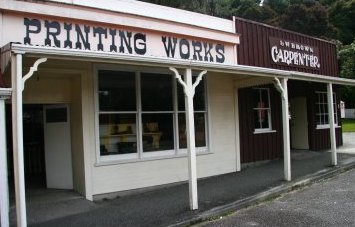
Carpenters were in exceptionally high demand during the gold rush era. Initially, buildings were erected quickly and simply, but as towns settled, skilled carpenters were needed to construct more “substantial” shops, hotels, and family homes.
What you’ll see in our shop:
Unless furniture was brought by settlers, local cabinetmakers were essential for providing beds, chairs, tables, and dressers.
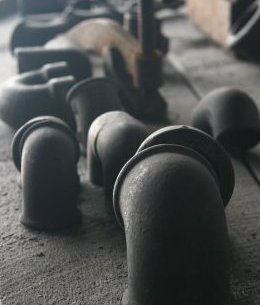
Both blacksmiths and tinsmiths were vital tradesmen in demand on the West Coast.
Their essential roles:
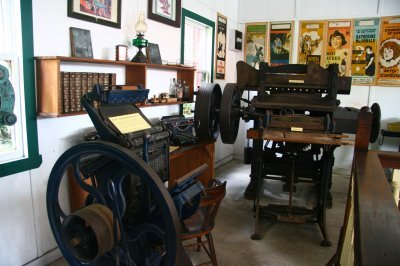
The West Coast saw the rapid establishment of newspapers after the gold discoveries, with the first paper, the ‘West Coast Times’, published in Hokitika on 2 May 1865.
Our Printing Works display:
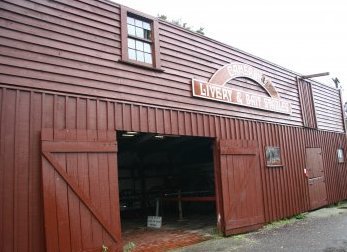
From the late 1860s, Cameron and Co. in Hokitika provided crucial passenger and freight transport between main towns and distant mining camps. This was a large operation, with Cameron’s keeping 100 horses in Hokitika alone, plus more at change stations along main routes.
Understanding the terms:
The front of the building at Shantytown is authentically replicated from Camerons’ Hokitika stable.
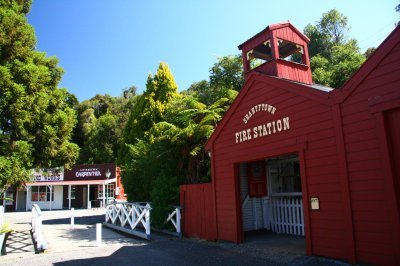
The Greymouth Volunteer Fire Brigade was established on 27 April 1867, funded by residents’ donations for equipment.
Early firefighting apparatus included:
The brigade obtained uniforms in 1870. Shantytown’s fire station is faithfully based on the Greymouth Volunteer Fire Brigade’s first building.
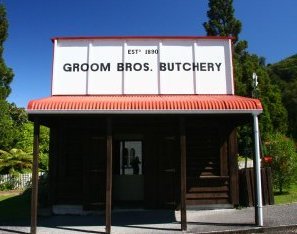
Shantytown’s butcher’s shop is based on the business owned by the Groom Brothers, which operated from around 1903 until the mid-1960s. Before the gold rush, the West Coast had few European settlers, and diggers initially struggled to get fresh meat.
How early miners obtained meat:
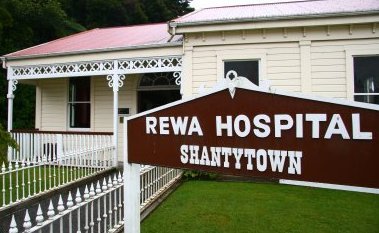
Often considered the “scariest exhibit” at Shantytown, this reproduction of a small hospital is named ‘Rewa’ after a maternity hospital in Greymouth.
Notable features in our hospital:
The Shantytown Rewa Hospital is filled with old-fashioned equipment that is “bound to frighten even the hardiest souls”!
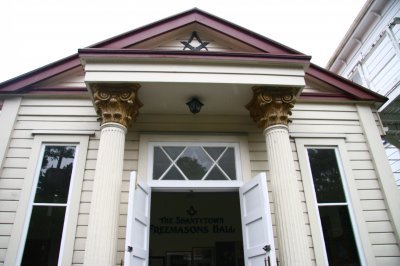
Gain a rare glimpse into the fraternal world of the Masonic Lodge at Shantytown. The first Masonic Lodge on the West Coast, the Pacific Lodge, was consecrated in Hokitika on 8 February 1866.
Key historical connections:
This building is notably the first Masonic Hall in an outdoor museum in New Zealand.
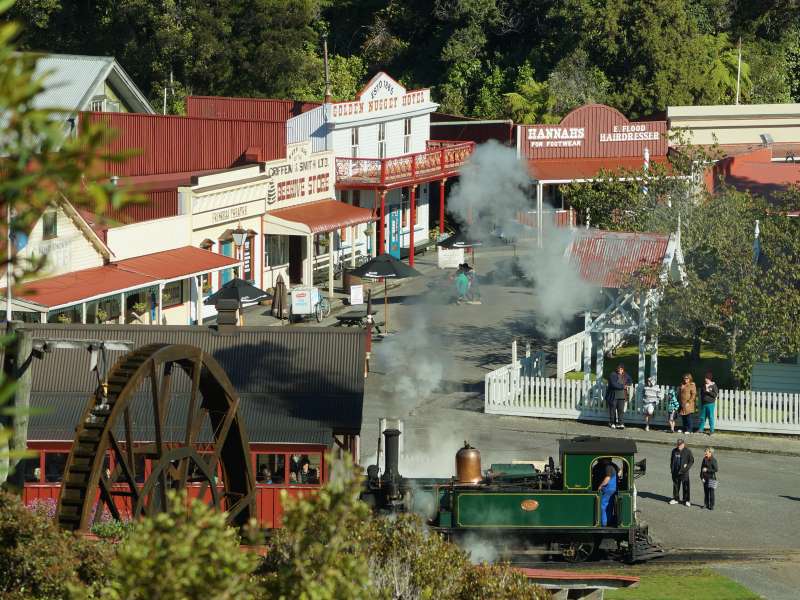
The Coronation Hall, built at Ross in 1902 to commemorate the coronation of King Edward VII, was officially opened by Prime Minister Richard Seddon in 1903. It served as a vital community center, housing a library, newspaper reading room, and borough council meeting rooms and offices.
Its journey to Shantytown:
Today, the hall has been recently renovated for watertightness and displays examples of a Victorian home and parlour, along with a library and the original council meeting table.
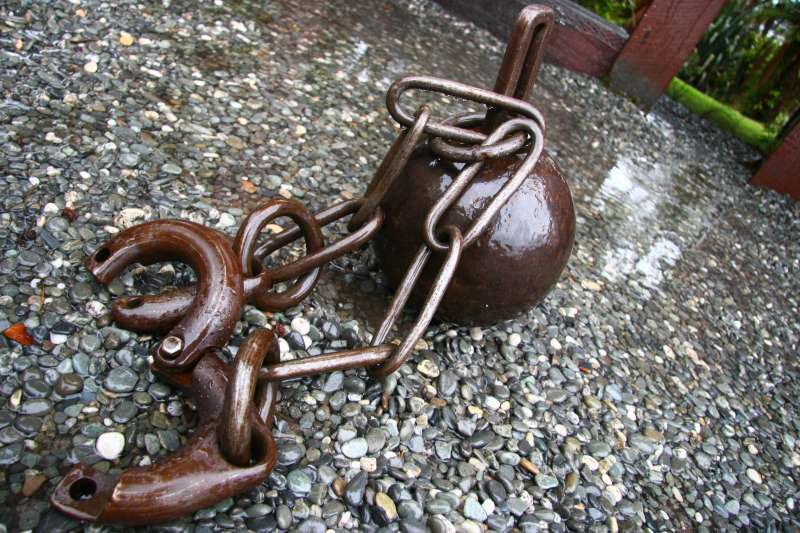
While the gold rush population was generally law-abiding, some “dastardly characters” did exist, such as the notorious Burgess-Kelly gang, active on the West Coast for a few months. They boasted of “putting away” 30 isolated miners whose disappearances went unnoticed. The gang was eventually hanged in Nelson, except for Sullivan who turned King’s evidence.
Executions on the West Coast:
Most imprisonments were for drunkenness, assault, debt, or having no visible means of support. Small jails like Shantytown’s replica were common in ‘up country’ gold towns, used for prisoners en route to the main Hokitika gaol or for those given short sentences.
Authentic elements:
You can view the jail and even place yourself or your friends in the stocks with a ball and chain for a fun photo opportunity!
Open Hours: 9 am – 4 pm
Closed: Christmas Day
Morning Train Times: 11am
Afternoon Train Times: 12.30 pm & 2.00pm